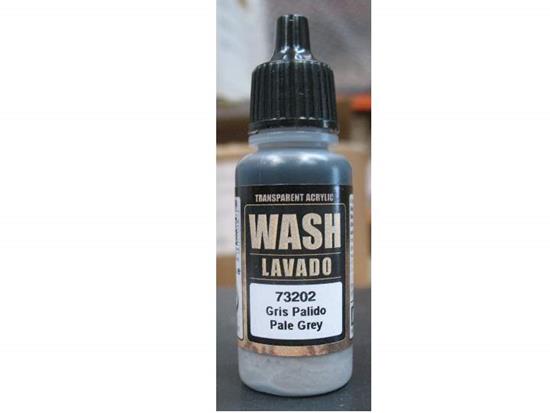as I worked on my Cygnar forces for a while now, I had ample opportunity to shade cloth. In this time, I tried out many different techniques, which I wanted to share with you. I will be covering layering, washing, airbrushing and using dry pigments in this article.
 |
| Layering |
 |
| Washing |
 |
| Using Pigments |
 |
| Airbrushing |
1. The Classic One - Layering with a brush
Layering is one of the most used techniques for painting cloth. You have to work from dark to light, which is difficult, when painting white cloth, as the coverage of the paints gets worse, the more bright it is. You just need to paint a basecoat and layer the subsequent colors over it, making sure to leave a bit of the darker color in the recesses.
For this basic cloth, I basecoated with VGC Cold Grey, then mixed in more and more VMC Ivory while layering. The last step was a 1:1 mix of VMC Ivory and VGC Skull White for the highlight on the edges.
 |
| Layering |
2. The Quick One - Washing the folds
Paint your basecoat. Apply Wash. Clean up basecoat, leaving the wash in the darkest areas. It's that simple.
But using a wash, especially on white cloth is so-so. The time you spend on cleaning up the basecoat after applying the wash is almost as much as layering in the first place. And the results often look a bit flat, compared to results you get from the other techniques.
 |
| Excellent for shading white cloth |
 |
| Washed and the basecoat cleaned up. |
3. The Technical One - Using an airbrush
You can use an airbrush for creating great looking shadows on cloth parts. This lets you paint an unbelievable smooth gradient, which adds to the realism of the figure.
Just basecoat and then take your shadow-color of choice and apply carefully to the folds. For white cloth, I found the transparent graphite color from Hansa Color to be excellent, as it shades every color and looks very natural.
The downside is, that not every miniature lends itself to be painted with an airbrush. You need a clear approach to the mini and the folds of the cloth need be straight, so the spray of the airbrush finds every nook and cranny. Otherwise, the whole mini looks off, when there are bright spots in the deepest shadows.
 |
| Shadows painted with an airbrush. |
4. The New One - Using pigments to shade
This one I've only tried recently. I've got the inspiration on one of Les' youtube tutorials, the one on Malifaux to be exact. For this technique, you just need varnish and your pigment of choice.
You start by painting your base color. Then, you apply matte varnish to the area you want to shade, so you have a rougher surface to which the pigment powder can adhere to. When this is completely dry, you apply the dry pigment with a brush. Just get in into all the folds making sure, that the deepest areas are the darkest. Mistakes can be scrubbed away using a stiff brush. You can even blend the edges, by using a moist brush and carefully pulling the edges of the pigmented surface out into the basecoated area with it. If you're satisfied with the result you can lock the pigment in by using another coat of varnish.
I found this way of creating shadows very appealing, as you have total control over the process and can correct small mistakes instantly. I also found the overall look of the shadows very realistic.
 |
| Pigment applied... |
 |
| ... and locked down |
Cheers,
IK-Painter

For layering white cloth, I recommend base coating in a blueish grey like GW's Astronomicon Grey(now called Celestra Grey), before highlighting all the way up to skull white.
ReplyDeleteVGC Cold Grey or GW codex grey is too flat, and the blueish tone of Celestra Grey gives it a nice stark white look as well as some contrast.